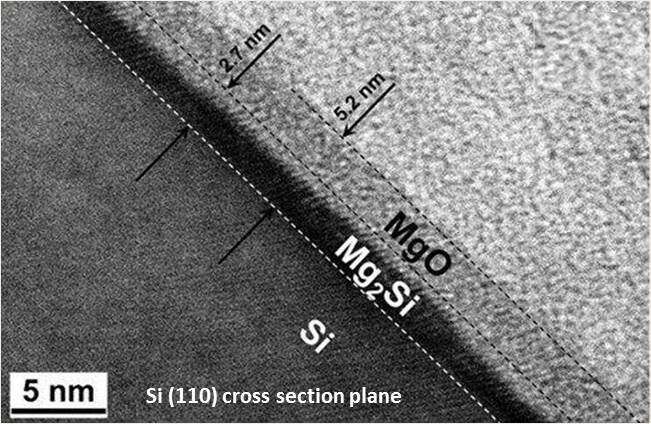Growth of ultra-thin MgO oxide films onto Silicon substrate
The generation of ultra-thin oxide layers (in the nanometer range) is currently facing a technological lock for numerous applications such as microelectronics, spintronics or even molecular electronics.
In this work we report a study of low dimensionality oxide layers formation by Scanning Tunneling Microscopy-Spectroscopy (STM-STS), Auger Electron Spectroscopy (AES) and Low Energy Electron Diffraction (LEED).
Using an original growth method based on alternate cycles of magnesium monolayer adsorption and room temperature (RT) oxidation, we focused on the formation of ultra-thin magnesium oxide films in the framework of systems exhibiting a wide range of potential applications, namely MgO / Si(100) and MgO / Ag(111).
Our study of the MgO / Si(100) system revealed the growth of an ultra-thin Mg2Si layer at the interface between the MgO film and the silicon substrate (figure 1). This interfacial layer acts as a diffusion barrier and prevents oxidation of the highly-reactive silicon during magnesium oxide growth. During the growth of an amorphous oxide monolayer (ML), we then provided evidence of a post-crystallization mechanism of the ultra-thin interfacial silicide in agreement with thermodynamic calculations.
The amorphous MgO ultra-thin film grown on top of this crystalline interfacial layer was shown to be highly homogeneous both in chemical composition and thickness, with a high electronic band gap of 6 eV.

Figure 1: TEM image of 7 MgO ML deposited at RT onto Si(001)

Powered by Eventact EMS